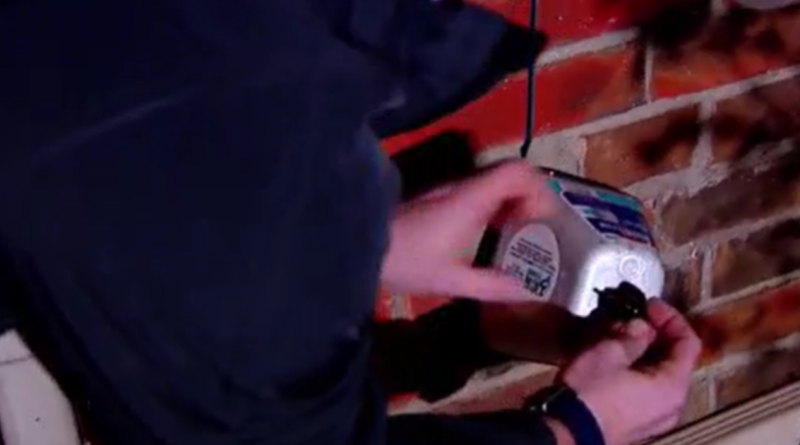How to Protect Your Home’s Pipes During the North Texas Freeze: Essential Tips
How to Protect Your Home’s Pipes During the North Texas Freeze: Essential Tips
As winter tightens its grip on North Texas, residents are bracing for the inevitable freeze that can wreak havoc on homes, particularly on plumbing systems. Frozen pipes are one of the most common and costly issues during cold snaps, often leading to burst pipes, water damage, and expensive repairs. To help homeowners safeguard their properties, experts have shared a comprehensive list of tips to protect pipes and prevent potential disasters during the freezing temperatures.
Understanding the Risks of Frozen Pipes
When temperatures drop below freezing, the water inside pipes can freeze, causing it to expand. This expansion puts immense pressure on the pipes, which can lead to cracks or even bursts. Once a pipe bursts, it can release hundreds of gallons of water into your home, damaging walls, floors, and personal belongings. The aftermath of such an event is not only stressful but also costly, with repairs often running into thousands of dollars.
North Texas, while not typically known for harsh winters, has experienced severe freezes in recent years, including the historic winter storm of 2021. This event left many homeowners unprepared and dealing with extensive damage. To avoid a repeat of such scenarios, it’s crucial to take proactive steps to protect your home’s plumbing system.
Key Tips to Protect Your Pipes During a Freeze
- Insulate Exposed Pipes: One of the most effective ways to prevent pipes from freezing is to insulate them. Focus on pipes in unheated areas such as attics, basements, garages, and crawl spaces. Use foam pipe insulation or heat tape to wrap the pipes, ensuring they are adequately covered.
- Seal Cracks and Gaps: Cold air can seep into your home through small cracks and gaps, increasing the risk of frozen pipes. Inspect your home for any openings near pipes, especially where they enter the house, and seal them with caulk or insulation.
- Let Faucets Drip: Allowing faucets to drip slightly can relieve pressure in the pipes, reducing the likelihood of them freezing. Even a small trickle of water can make a significant difference, particularly for pipes located on exterior walls.
- Keep Interior Doors Open: To ensure warm air circulates throughout your home, keep interior doors open. This is especially important for cabinets under sinks, as closed doors can trap cold air around the pipes.
- Maintain a Consistent Thermostat Setting: Set your thermostat to a consistent temperature, both during the day and at night. Avoid lowering the temperature too much, even when you’re asleep or away from home. A steady warmth will help keep pipes from freezing.
- Disconnect and Drain Outdoor Hoses: Outdoor hoses and faucets are particularly vulnerable to freezing. Disconnect hoses, drain them, and store them indoors. If possible, shut off the water supply to outdoor faucets and drain any remaining water from the pipes.
- Use Space Heaters Strategically: In areas where pipes are more susceptible to freezing, such as garages or basements, consider using space heaters to provide additional warmth. Be sure to follow safety guidelines and keep heaters away from flammable materials.
- Know the Location of Your Main Water Shut-Off Valve: In the event of a burst pipe, knowing how to quickly shut off the main water supply can minimize damage. Familiarize yourself with the location of the valve and ensure it’s in good working condition.
- Consider Pipe Heating Cables: For pipes that are particularly prone to freezing, heating cables can be a lifesaver. These cables provide a consistent source of heat to keep pipes warm, even in the coldest conditions.
- Prepare for Extended Freezes: If a prolonged freeze is forecasted, take extra precautions. Open cabinet doors, increase the thermostat temperature slightly, and check on your pipes regularly to ensure they remain unfrozen.
What to Do If Your Pipes Freeze
Despite your best efforts, pipes may still freeze during extreme cold. If you suspect a frozen pipe, act quickly. Turn off the main water supply and use a hairdryer or heating pad to gently thaw the pipe. Avoid using open flames, as they can damage the pipes or pose a fire hazard. If you’re unable to locate the frozen section or if the pipe has burst, contact a licensed plumber immediately.
The Importance of Being Prepared
The key to surviving a North Texas freeze is preparation. By taking these preventive measures, homeowners can significantly reduce the risk of frozen pipes and the associated damage. Investing time and effort now can save you from the stress and expense of dealing with burst pipes later.
As winter approaches, it’s also a good idea to review your homeowner’s insurance policy to ensure you’re covered for water damage caused by frozen pipes. Some policies may have specific exclusions or limitations, so it’s better to be informed ahead of time.
In conclusion, while North Texas may not experience freezing temperatures year-round, the occasional cold snap can be devastating for unprepared homeowners. By following these expert tips, you can protect your home’s pipes, safeguard your property, and enjoy peace of mind throughout the winter season.

